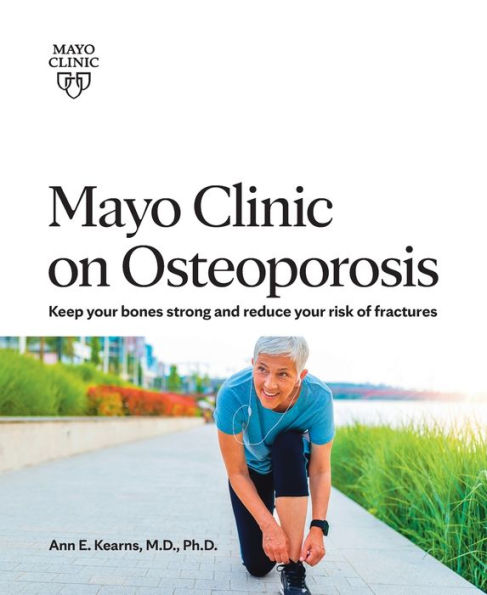Mayo Clinic on Osteoporosis: Keep your bones strong and reduce your risk of fractures
Around 54 million Americans live with osteoporosis or low bone mass, but many don’t recognize the symptoms until it is too late. Before a bad fall or fracture renders you immobile, learn how to reduce your risk of developing osteoporosis, manage your day-to-day symptoms, and even treat the disease with the tools provided in Mayo Clinic on Osteoporosis. Throughout your life, your bones are constantly rebuilding. But as you age, you run a greater risk of your new bone growth not being able to keep up with the old bone you’re losing. Osteopenia and osteoporosis develop when this imbalance makes bones weak and likely to break. A stooped posture, low-trauma fractures, and collapsed vertebrae are a few of the tell-tale signs associated with weakened and brittle bones. But fortunately, an osteoporosis diagnosis doesn’t have to be permanent. By taking the right steps, you can reduce your risk of future fractures, stop bone loss, and even rebuild your low bone density. In this book, Dr. Ann E. Kearns, a leading endocrinologist at Mayo Clinic, provides clear, practical information on the common causes of osteoporosis and osteopenia, simple ways to prevent bone loss with nutritious foods and supplements, and how to test for low bone mass before a fracture occurs. You will also learn tips for healthy eating and beneficial exercises, using modern medications to stop bone loss and encourage new bone growth, and how to quickly and safely recover from injuries sustained from low bone density. Together with your health care provider, you can take action to maintain strong bones and a full, healthy life.
1138872516
Mayo Clinic on Osteoporosis: Keep your bones strong and reduce your risk of fractures
Around 54 million Americans live with osteoporosis or low bone mass, but many don’t recognize the symptoms until it is too late. Before a bad fall or fracture renders you immobile, learn how to reduce your risk of developing osteoporosis, manage your day-to-day symptoms, and even treat the disease with the tools provided in Mayo Clinic on Osteoporosis. Throughout your life, your bones are constantly rebuilding. But as you age, you run a greater risk of your new bone growth not being able to keep up with the old bone you’re losing. Osteopenia and osteoporosis develop when this imbalance makes bones weak and likely to break. A stooped posture, low-trauma fractures, and collapsed vertebrae are a few of the tell-tale signs associated with weakened and brittle bones. But fortunately, an osteoporosis diagnosis doesn’t have to be permanent. By taking the right steps, you can reduce your risk of future fractures, stop bone loss, and even rebuild your low bone density. In this book, Dr. Ann E. Kearns, a leading endocrinologist at Mayo Clinic, provides clear, practical information on the common causes of osteoporosis and osteopenia, simple ways to prevent bone loss with nutritious foods and supplements, and how to test for low bone mass before a fracture occurs. You will also learn tips for healthy eating and beneficial exercises, using modern medications to stop bone loss and encourage new bone growth, and how to quickly and safely recover from injuries sustained from low bone density. Together with your health care provider, you can take action to maintain strong bones and a full, healthy life.
19.99
In Stock
5
1

Mayo Clinic on Osteoporosis: Keep your bones strong and reduce your risk of fractures
256
Mayo Clinic on Osteoporosis: Keep your bones strong and reduce your risk of fractures
256
19.99
In Stock

Product Details
| ISBN-13: | 9781893005242 |
|---|---|
| Publisher: | Mayo Clinic Press |
| Publication date: | 10/19/2021 |
| Pages: | 256 |
| Sales rank: | 82,476 |
| Product dimensions: | 7.38(w) x 9.12(h) x 0.40(d) |
About the Author
From the B&N Reads Blog
